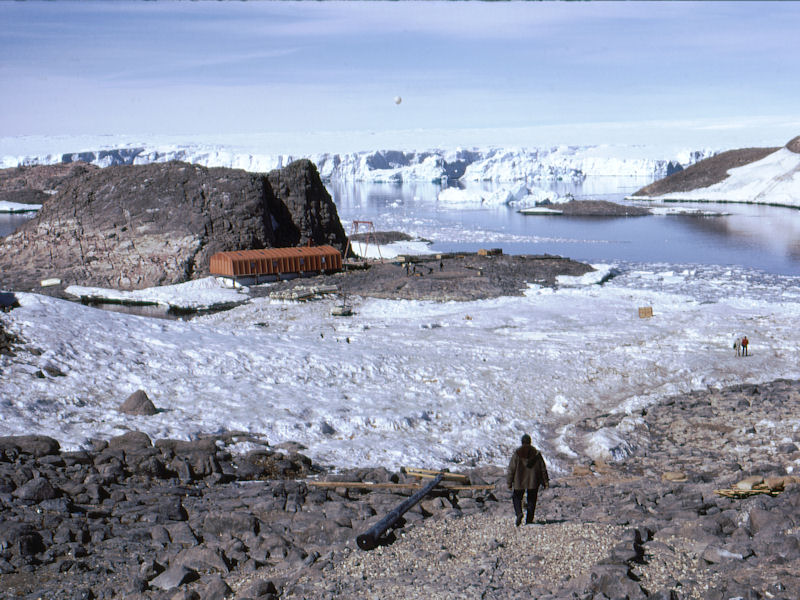
Photo album: "Preparation for launching"
Fly over a photo with the mouse to enlarge it
Click on a photo to open it in a new window
We
are going to see the operations before the launch of the balloon that will carry
the CITADEL experiment measuring the electric field. Four specialists have come
for this experiment, we will call them the CITADEL team: the team leader,
Jean-Jacques Berthelier, researcher at GRI (Groupe de Recherches Ionosphériques);
Gérard Gogly his assistant, engineer at GRI; Jean-Pierre Legrand, engineer at
GRI; Roger Raymond specialist from the ballons-sondes service at CNES (Centre
National d'Études Spatiales). They are helped during the launch operations by
the members of the IONO team of the 23rd mission. A dozen of launches are
expected during this campaign. The main difficulty is the wind, its speed at
ground level must remain less than 10 km/h during the whole operation, i.e.
three hours at least. These conditions will be met about fifteen times during
the January-February 1973 period. The mean wind velocity during the campaign
will be 40 km/h and the maximum speed recorded on January 31st will be 220 km/h.
The absolute maximum wind speed recorded, at Dumont d'Urville, at the time (early
1973) was 310 km/h.
 |
The meteorologists have announced a calm wind period, therefore favourable to launch a balloon. We are walking towards the "pré" where is situated the launch pad. |
 |
The launch pad is flat but very coarse. Canvases are stretched on the ground before spreading the balloon which has a very fragile envelope: a few hundredths of millimetre thick, only. |
 |
We begin to inflate a balloon of small dimensions, called auxiliary balloon. |
 |
The auxiliary balloon is now inflated with 40 cubic metres of helium. It will carry the payload until the launch of the main balloon which will be inflated afterwards. |
 |
Jean-Pierre Legrand is beginning to deploy the main balloon which was protected by a plastic envelope, a member of the IONO team for the next winter over is helping him. |
 |
We can perceive, on the ground at right, the small diameter tube for inflating the balloon, coupled to one of the helium containers. |
 |
Jean-Pierre Legrand is finishing the spreading of the main balloon, which has to be done very carefully. People who manipulate it have to wear silk gloves in order not to injure the balloon skin. |
 |
The main balloon is now entirely spread on the protective canvases. We see, on foreground at left, the fourth member of the CITADEL team: Roger Raymond. |
 |
Everything is now ready to begin the inflation of the main balloon. |
 |
The hose is inflated but the balloon is still entirely on the round. |
 |
The main balloon is beginning to rise. Jean-Pierre Legrand, helped by another operator, holds it and guides it from the ground. |
.
.
.
.
.
.
.